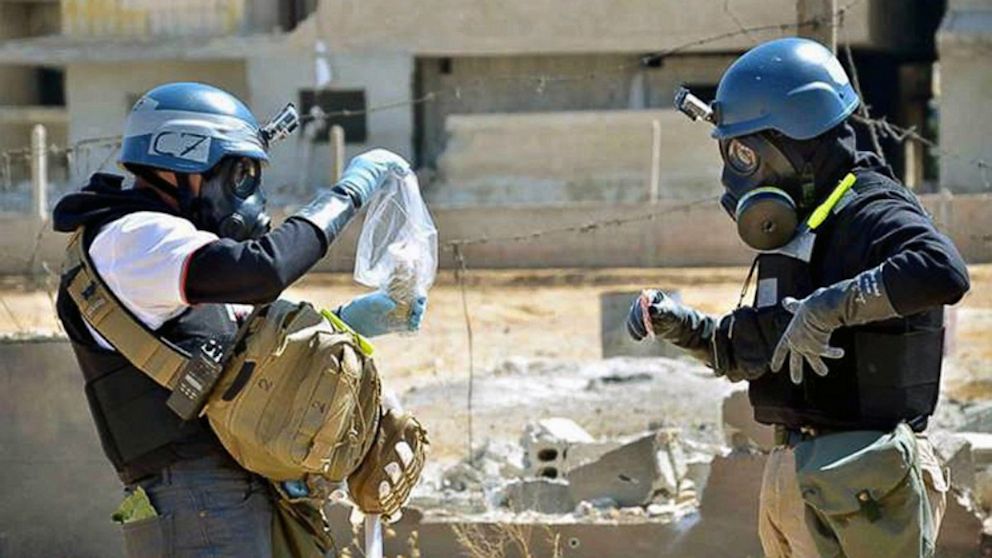By Thomas Murphy
Impunity Watch Reporter, Middle East
DAMASCUS, Syria – Russia has proposed that Syria turn over all of its chemical weapons to the United Nations for destruction. The plan involves the creation of safe zones within Syria where U.N. chemical weapons experts can gather and destroy Syria’s chemical weapons supply. U.N. Secretary General Ban Ki-moon addressed the media regarding the plan.

“I am considering urging the Security Council to demand the immediate transfer of Syria’s chemical weapons and chemical precursor stocks to places inside Syria where they can be safely stored and destroyed,” Ban said.
Ban was optimistic at the suggestion of the plan, but took issue with the lack of action from a Security Council that has been suffering from “embarrassing paralysis”. He added that if Syria is found to have used chemical weapons that it would be an “abominable crime” that demands an international response, but did not elaborate on what exactly that response would entail.
U.N. chemical weapons experts are expected to present their report about an alleged August 21 chemical weapons attack by the Syrian government to the U.N. Chief later this week or next. The attack, reportedly carried out by Syrian President Bashar al-Assad forces, killed one thousand four hundred people, many of whom were children.
The sudden twist in the chemical weapons saga was prompted by a comment by United States Secretary of State John Kerry when he responded to a reporter’s question asking how Syria could avoid U.S. military intervention. Kerry responded by suggesting that a potential strike could be avoided if Syria was to surrender all of its chemical weapons within a week.
Shortly thereafter, Russia Foreign Minister Sergey Lavrov stated that he advised Syria that it should place its chemical weapons under international control if it would avert military intervention. Lavrov said that he expected “a quick and, I hope, a positive answer” from Syria.
Syrian Foreign Minister Walid al-Muallem issued a statement responding warmly to Russia’s proposal, but refused questions and did not address any specifics of the proposal.
“Syria welcomes the Russian proposal out of concern for the lives of the Syrian people, the security of our country and because it believes in the wisdom of the Russian leadership that seeks to avert American aggression against our people,” said al-Muallem.
Meanwhile, President Obama expressed caution at the plan’s potential, stating that the plan could avert U.S. action “if it’s real”.
“It’s going to have to be followed up on,” he said. “And we don’t want just a stalling or delaying tactic to put off the pressure that we have on there right now.”
For further information, please see:
ABC – Russia, Syria Push for UN Chemical Experts Return – 9 September 2013
Al Jazeera – Syria welcomes proposal on chemical weapons – 9 September 2013
CNN – Syria chemical arms plan promising ‘if it’s real,’ Obama says – 9 September 2013
Reuters – U.N. floats plan to destroy Syrian chemical weapons stock – 9 September 2013


